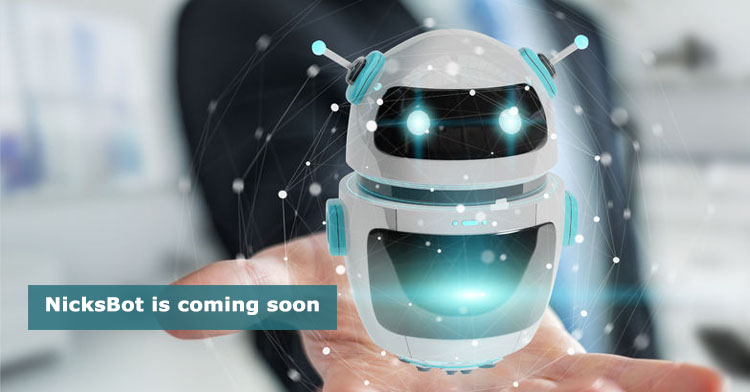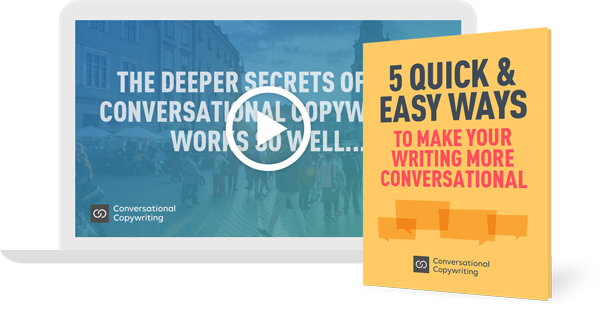
Yes, I really am working on the creation of my own chatbot.
And it’s a fascinating process.
Chatbots are driven by AI, or Machine Learning.
But this doesn’t mean a chatbot thinks like a human. It doesn’t. It doesn’t make up stuff on the fly either.
As the creator of the chatbot you have to anticipate and set up a whole bunch of possible interactions and “if/then” decision trees.
For example, imagine you’re trying to buy some hiking boots on a wilderness sports website.
If you can’t find what you want, maybe you’ll open a chat session. (And you’ll probably think you’re dealing with a real person.)
Let’s say you type in, “I want to find some hiking boots”.
The chatbot will then see that if someone inputs the phrase “hiking boots”, the first response should be, “No problem… are these hiking boots for a man or a woman?”
And so on. You make a list of questions you think your prospects might ask, and then create a decision tree of responses.
This doesn’t mean your bot is dumb. Far from it.
Smart bots also make use of NLP – Natural Language Processing. Among other things, this enables them to understand how you’re feeling.
If the bot discerns that you’re getting upset, it might respond with, “Ouch, I don’t seem to be doing a very good job here. Sorry about that. Would you like to talk to my supervisor?”
The point being, chatbots know how you feel, have the facts at their fingertips, and are now able to do a better job than most humans when it comes to real-time customer service.
Consider the things chatbots are REALLY good at…
As humans we think there is something unique about our ability to communicate with others. We think our very “humanness” means we’ll always be better than computers at holding conversations.
I don’t believe that.
One reason I don’t believe it is because humans can be extraordinarily bad at holding conversations. But also because computers are becoming better and better at it.
Chatbots are perfect listeners.
When you’re creating interactions driven by an if/then process, everything the chatbot says is in response to the visitor’s own question or comment.
In other words – unlike humans – chatbots always listen before they respond.
And being computers, their attention never wavers.
They don’t become distracted by their Twitter feed or start thinking about what they’re having for dinner that evening.
Chatbots can figure out what you’re feeling.
That’s pretty amazing.
But what’s more amazing is that for all our “humanness”, people often do a terrible job of figuring out what people are feeling… particularly over a medium like live chat.
Some of us just aren’t that empathetic. Others may know what someone else is feeling, but just not care very much.
Chatbots don’t have those problems, or barriers to empathy.
Chatbots don’t lose their cool.
Customer service people can have bad days. Or react badly to a particular customer or situation.
And as soon as the customer gets even the slightest hint that the customer service agent is getting a bit ticked off, it’s game over.
Chatbots don’t get emotional. They’re always listening and responding in an appropriate way.
But here’s the MAIN reason I’m building my own chatbot…
You might wonder why I would even bother to create a chatbot for a site like Conversational Copywriting.
Well, it might raise my conversion rate percentage by a few points if I can answer people’s questions on the fly, before they leave the sales page.
But that’s not the main reason I’m doing this.
I’m doing this because it’s forcing me to think really, really hard about the questions people might want answered before enrolling in my course.
Remember, for the chatbot to do its thing, I need to help it recognize the questions being asked. That means I have to truly understand what my potential customers want and are looking for.
I need to know the questions they’re most likely to ask.
I need to be familiar with the language they use.
Also, because I’m the one who is going to write the answers for my chatbot to use, I have to write these answers in a very conversational tone.
Yes, I’m being trained too…
As I train my chatbot, I’m training myself too.
I’m training myself to be a better listener, and to anticipate all the questions that might come up.
And I’m training myself to write all those questions and answers in a conversational manner.
This is still a work in progress for me. And I’m at a stage where I’m just scratching the surface of what chatbots are capable of.
But I’m enjoying the journey.
And as soon as I let NicksBot out into the wild, I’ll let you know!
Conversational Copywriting is the future of selling online. You can build your expertise now, or try catching up later. Find out about the course here…

I like this idea and your thought process behind it. One aspect of these bots that bothers me is the misleading intention to represent the bot as a person. The beginning of the customer-seller relationship is the last place to misrepresent ANYTHING. It’s difficult to establish trust and transparency after a scenario like that. Establishing upfront with the potential customer how this AI is going to help their UX seems more in keeping with the Conversational Copywriting spirit.
Fascinating, from your bot to the real person. Let’s hope (name of person) is in a good mood by the time the bot has transferred the conversation. I think the human condition will always be prominent in every interaction. There is the potential for a good conversation or a bad one, depends on what’s going on inside the two individuals who finally get to have a conversation.
The crop of chatboxes remind me so much of an evolved ELIZA I used to play with in the early 80’s. Some of the older folks reading this will remember that one.
Yes, training a chatbox would indeed get one to think deep and in detail and learn quickly, like can happen when teaching a subject a person is less than expert in. Even if only that benefit accrues, it’s likely to be well worth it.
Will
Wow Nick. What a great transition to man’s leisure!
You’re great explanation of this Chatbot process demonstrates the HAL … sorry, I meant AI … progress in taking over human tasks that are error prone. The methodology has been evolving since the merging of computers and telecommunications in the mid 80s.
AI is now sitting in the seat of the accented chat operator. The operator’s computer is redundant and the script to which the human followed is now in the cloud and being interpreted more effectively by AI. In fact AI, with machine learning, will be constantly improving the script as more people use the chatbot.
So this results in one less job being exported. In fact, the job is totally eliminated. And now the script is being crowdsourced. I love it!
You’re right. But in this case, I just want the bot to be there for that first moment of engagement and to answer some simple questions. The real value, I think, will be to have the bot escalate the conversation into my hands… from NicksBot to RealNick. I can then, hopefully, very simply close the sale. NicksBot is a conversation starter. : )
Will using a conversational approach in my copy help my rankings in Google? And if so, why?
Actually yes. Google is into natural language. More specifically, conversational language is a perfect match for voice search through mobile phones. Check out my post here: https://conversationalcopywriting.com/conversational-voice-search/